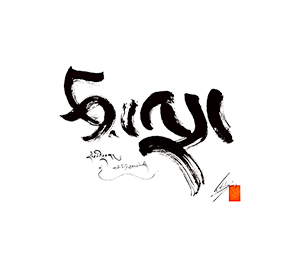The Mahāparinirvāṇa-Sūtra and Its Earliest Interpreters in China: Two Prefaces by Tao-lang and Tao-sheng
< Articles(Redirected from The Mahāparinirvāṇa-Sūtra and Its Earliest Interpreters in China: Two Prefaces by Tao-lang and Tao-sheng)
| Citation: | Lai, Whalen. "The Mahāparinirvāṇa-Sūtra and Its Earliest Interpreters in China: Two Prefaces by Tao-lang and Tao-sheng." Journal of the American Oriental Society 102, no. 1 (1982): 99–105. |
|---|
Abstract
One of the most popular sūtras in China is the Ta-pan nieh-pan ching, the Mahāparinirvāṇa-sūtra translated by Dharmakṣema in 421 A.D. Its doctrine of "universal Buddha-nature" has endeared itself to the Orient so much that it became an axiom of sorts, and any challenge to this doctrine would be seen as a challenge against Mahayana itself. To this day, this sūtra, TPNPC for short, is well received by all major Buddhist schools. The Pali canon preserved its version of the teaching of the Buddha at his parinirvāṇa, great extinction, in the Dighanikaya. The Mahayana tradition's redaction is the Mahāparinirvāṇa-sūtra, of which the Chinese translations alone survive. Prior to Dharmakṣema, Fa-hsien the pilgrim and Buddhabhadra translated a shorter Ta-pan ni-yüan ching in six chapters. This version was based on an earlier Sanskrit text that corresponds now to the first ten chapters of the forty-chaptered TPNC. The texts were unknown to Kumārajīva (d. 413) the Kuchan translator who produced the authoritative Miao-fa lien-hua ching, the Saddharma-puṇḍarīka or Lotus-sūtra. When the TPNPC was known to the Chinese, it was almost immediately crowned as the final, ultimate 'positive'—that is affirming the permanence of the Buddha-nature qua Dharmakāya qua mahā-nirvāṇa—teaching of the Buddha. Even the Lotus-sūtra was placed, both in time and in content, second to it. In the Sui dynasty, however, T'ien-t'ai master Chih'i, establishing the Lotus school, reversed the judgement somewhat.[2] It is in part to uncover the glory that once belonged to the TPNPC that the present essay tries to analyze the initial reception of this sūtra. (Lai, "The Mahāparinirvāṇa-Sūtra and Its Earliest Interpreters in China," 99)
Notes
- The placement of note #1 in the text is unclear in the original. Nevertheless it reads: On the impact of the TPNPC, see Kenneth Ch'en, Buddhism in China (Princeton: Princeton University, 1964), pp. 112-129 or Fuse Kōgaku, Nehanshū no kenkyū, I, II (Tokyo, Sōbun, 1942) and Tokiwa Daijō, Busshō no kenkyū (Tokyo, Meiji, 1944).
- On Chih-i's p'an-chiao, see Leon Hurvitz, "Chih-i," Melanges chinois et Bouddhiques, XII, (Brussells, 1960-62), esp. appendix on p'an-chiao.
